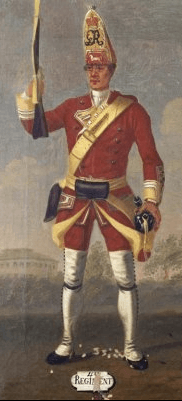Siege of Grand Pré facts for kids
Quick facts for kids Siege of Grand Pré |
|||||||
|---|---|---|---|---|---|---|---|
| Part of Father Le Loutre's War | |||||||
 Site of siege of Grand Pré, Hortonville, Nova Scotia |
|||||||
|
|||||||
| Belligerents | |||||||
|
|||||||
| Commanders and leaders | |||||||
| unknown | |||||||
| Strength | |||||||
| 300 Mi'kmaq, Maliseet, and Acadians | unknown British regulars | ||||||
| Casualties and losses | |||||||
| unknown | 25 prisoners; 2 killed | ||||||
The Siege of Grand Pré was a battle that happened during Father Le Loutre's War. It was fought between the British and a group of Native Americans and Acadians. The fight took place at Fort Vieux Logis in Grand-Pré, which is now called Hortonville, Nova Scotia. Native American and Acadian fighters surrounded Fort Vieux Logis for about a week in November 1749. Some historians believe this siege happened to help Acadians move away from the area, in what is known as the Acadian Exodus.
Contents
Why the Siege Happened
Even though the British took over Acadia in 1710, most people living in Nova Scotia were still Catholic Acadians and Mi'kmaq. The Wabanaki Confederacy, which included the Mi'kmaq, had a long history of protecting their land. They often fought against British settlers along the border between New England and Acadia.
Protecting Their Land
The Mi'kmaq wanted to stop Protestant settlements from being built in their area. They attacked early British settlements like Shelburne in 1715 and Canso in 1720. Years later, Father Le Loutre's War began. This happened when Edward Cornwallis arrived to start the city of Halifax on June 21, 1749.
British Forts in Acadia
Within 18 months of starting Halifax, the British built forts in important Acadian towns. These forts helped them control the Nova Scotia peninsula. New forts were built in places like Windsor (Fort Edward), Grand-Pré (Fort Vieux Logis), and Chignecto (Fort Lawrence). A British fort, Fort Anne, already existed in Annapolis Royal.
Native American and Acadian groups often raided these new British forts. The Siege of Grand Pré was one of these attacks.
Events Before the Siege
Just before the siege, on September 30, 1749, about 40 Mi'kmaq attacked six men. These men were cutting trees at a sawmill in Dartmouth, Nova Scotia. Four of the men were killed, one was captured, and one managed to escape.
After this attack, on October 2, 1749, Governor Cornwallis issued a special order. This order allowed for the removal of certain groups from the area. The Siege of Grand Pré was the first major conflict recorded after Cornwallis made this order.
The Attack on Fort Vieux Logis
On November 27, 1749, a group of 300 fighters attacked Fort Vieux Logis. This group included Mi'kmaq, Maliseet, Penobscot people, and 11 Acadians. The fort was led by John Handfield from the 40th Regiment of Foot.
The Native American and Acadian fighters killed the guards who were shooting at them. Then, they captured Lieutenant John Hamilton and 18 soldiers. These soldiers, including Handfield's son William, were checking the area around the fort. The attackers also captured six women and another soldier nearby.
After capturing the British soldiers, the Native American and Acadian groups tried several times to take over the fort. They tried for about a week before leaving the area. When Gorham's Rangers arrived, the attackers had already left. They took their prisoners with them to Chignecto.
What Happened Next
On March 18, 1750, Gorham's Rangers left Fort Sackville (Nova Scotia). They were ordered by Governor Cornwallis to march to Pisiquid (Windsor). Their job was to build a small fort there, which became Fort Edward. They also had to take property from Acadians who had been part of the Siege of Grand-Pré. On their way, Gorham's Rangers fought the Mi’kmaq in the Battle at St. Croix.
Continued Raids and Peace Efforts
The Mi’kmaq and Acadians kept attacking Protestant settlements. Examples include the Raid on Dartmouth (1751) and the Raid on Lunenburg, Nova Scotia (1756). For the Maliseet people, the siege was the first time they broke the peace treaty they had made with Cornwallis just a few months earlier.
Prisoner Release
The captured British soldiers and others were held for two years. In August 1751, Lieutenant John Hamilton and his father-in-law, William Shirriff, worked to get the prisoners released. They were able to free Hamilton and 60 other Englishmen who had been captured.
To get them back, a trade was made. A daughter of a Native American chief named Captain Sam was exchanged. She had been captured by Gorham's Rangers in 1748. The Governor and Council paid a ransom of £882 to release the 60 prisoners. Even as late as June 1754, Captain Hamilton wrote a letter supporting Abbe Le Loutre, who was involved in the ransom.



